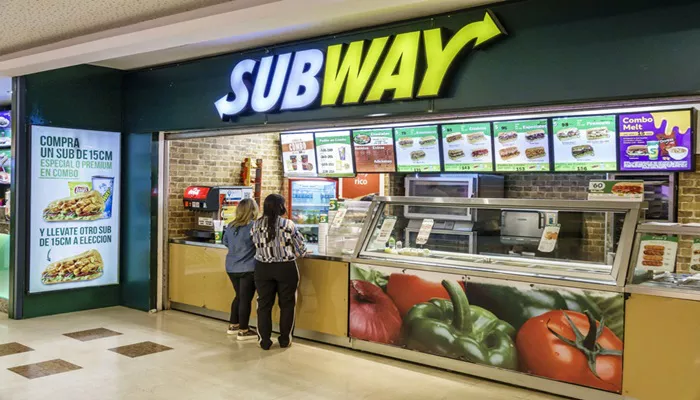Subway is one of the largest and most recognized fast-food chains in the world, specializing in sandwiches and salads. Since its founding in 1965, Subway has expanded its presence globally, attracting franchisees with its relatively low startup costs and extensive support. However, prospective franchisees often wonder about the financial performance of a Subway franchise, particularly regarding its average net profit. This article delves into the average net profit for a Subway franchise, exploring various factors that influence profitability.
Understanding Subway’s Franchise Model
Franchise Overview
Subway operates on a franchise model, allowing independent owners to operate their own stores under the Subway brand.
Franchisees benefit from the established brand reputation, marketing support, and operational systems that Subway provides. This model has contributed to Subway’s growth and success, making it a popular choice for entrepreneurs.
Initial Investment
Before discussing profits, it’s essential to understand the initial investment required to open a Subway franchise. The total startup costs can range from approximately $150,000 to $300,000. This amount includes franchise fees, equipment, inventory, and leasehold improvements. The initial franchise fee typically ranges from $10,000 to $15,000, making it an accessible option compared to other fast-food franchises.
Average Net Profit of A Subway Franchise
Financial Performance Overview
The average net profit for a Subway franchise can vary significantly based on several factors, including location, management efficiency, and local market conditions. According to various industry reports, the average annual net profit for a Subway franchise ranges from $70,000 to $100,000. However, some franchisees report earnings above this range, while others may earn less, especially in highly competitive areas.
Factors Influencing Profitability
Location: The profitability of a Subway franchise largely depends on its location. High-traffic areas, such as near schools, office buildings, and shopping centers, typically yield higher sales. Conversely, franchises in less favorable locations may struggle to attract customers.
Operational Efficiency: Franchisees who manage their operations effectively can significantly increase profitability. This includes efficient staffing, effective inventory management, and maintaining high customer service standards. Investing in staff training and operational systems can lead to better financial outcomes.
Menu and Pricing Strategy: Offering a diverse menu and competitive pricing can attract a broader customer base.
Franchisees who adapt their menu to local tastes and preferences often see increased sales. Additionally, promotional strategies and limited-time offers can help drive traffic and boost profits.
Marketing and Promotions: Subway provides marketing support to its franchisees. However, successful franchisees often engage in local marketing efforts to enhance visibility. Participating in community events or offering promotions can help increase foot traffic and sales.
Cost Control: Controlling costs is crucial for improving net profit. This includes managing food costs, labor expenses, and overhead. Franchisees who keep a close eye on their expenses can maximize their net profit margins.
Profit Margin Analysis
Gross Sales and Operating Expenses
To better understand net profit, it’s essential to analyze gross sales and operating expenses. On average, a Subway franchise generates annual sales of around $400,000 to $500,000. Operating expenses, including rent, utilities, payroll, and food costs, typically account for 60-70% of gross sales. Therefore, after deducting these costs, franchisees can expect a net profit margin of approximately 15-25%.
Break-Even Analysis
Determining the break-even point is also critical for franchisees. The break-even point is the level of sales needed to cover all expenses. For a Subway franchise, this usually occurs when annual sales reach around $300,000. Understanding the break-even point helps franchisees set sales targets and evaluate the feasibility of their business.
Comparing Subway Franchise Profitability
Industry Comparisons
When comparing Subway’s profitability to other fast-food franchises, it’s essential to consider that many franchises operate at different profit margins. For instance, franchises like McDonald’s or Chick-fil-A often report higher average net profits, sometimes exceeding $200,000 annually. However, these brands typically require a more substantial initial investment and offer a more complex operational structure.
Success Stories
Despite the competition, many Subway franchisees have found success and profitability. Some franchisees report net profits exceeding $100,000, thanks to strategic locations, strong marketing efforts, and efficient operations. These success stories illustrate that while average profits provide a guideline, individual results can vary significantly.
Conclusion
In summary, the average net profit for a Subway franchise typically ranges from $70,000 to $100,000 annually, depending on several factors such as location, management efficiency, and market conditions. While the initial investment is relatively low compared to other fast-food franchises, achieving profitability requires careful planning and execution. By focusing on operational efficiency, effective marketing, and cost control, franchisees can enhance their chances of success in the competitive fast-food industry.
Related topics:
- Is Hungry Jacks Owned by KFC?
- Does Subway Sell Franchises?
- How Much to Franchise 7-Eleven in Malaysia?

